 Many homebrew retailers will tell you that you can save money by homebrewing. But is this really the case? How much does it really cost to make your own beer? Let’s crunch some numbers.
Many homebrew retailers will tell you that you can save money by homebrewing. But is this really the case? How much does it really cost to make your own beer? Let’s crunch some numbers.
The typical homebrewer brews enough beer to produce about five gallons. Account for some loss, and let’s call it eight six-packs. That’s a lot of beer! What does it cost to buy a six-pack of a typical pale ale? It varies depending on the brand and the retailer, but let’s call it $10, or $80 for eight six-packs. Maybe less if you buy a twelve-pack here and there. Depending on your state, tax can add a nice chunk too.
A pale ale recipe kit on the other hand, such as the Steam Freak “Bazz” Pale Ale, costs just shy of $35. Of course there’s shipping to account for, but buy two or more and the price goes down to under $32 per kit, plus you qualify for E. C. Kraus free shipping. Now we’re talking! As you can see it really doesn’t cost that much to make your own beer.
Shop smart and you could be in for some serious savings over buying your beer from the store. Compare it to the amount you’d spend at the local pub…you can save a lot by homebrewing!
The challenge comes in when we start adding in the variables, such as equipment. Our Beer Makers Necessities Kit runs for just shy of $130, but includes your first ingredient kit and free shipping. It’s an up front investment, so the more your brew, the less it costs per batch. There are other costs that are spread out over time, such as cleaner and sanitizer, but their per-six-pack cost is pretty minimal (at most a dollar or so per gallon of beer).
Beer blogger Bryan Roth (who you may remember from his guest post titled Malt, Hops, and Zen) explores this question on his personal blog, This is Why I’m Drunk. He was kind enough to compile some data on the costs of his beer recipes and then compare them to their commercial equivalent:
Bryan’s Homebrew Ingredient Costs
|
Beer (K) = Prepared Kit (R) = My Recipe |
Ingredient Cost |
Cost per Bottle |
Cost per Six-Pack |
ABV |
|
Jalapeno Blonde (K) |
$30 |
71 cents |
$4.26 |
6.50% |
|
Bass Ale Clone (K) |
$33 |
79 cents |
$4.74 |
5% |
|
Belgian Saison (K) |
$39 |
93 cents |
$5.58 |
6% |
|
Beer/Cider Hybrid (K) |
$40 |
95 cents |
$5.70 |
7.30% |
|
Poor Richard’s Ale (R) |
$45 |
$1.07 |
$6.42 |
5.50% |
|
Apricot Wheat (K) |
$47 |
$1.12 |
$6.72 |
6% |
|
Blueberry Wheat (R) |
$48 |
$1.14 |
$6.84 |
6.50% |
|
Honey Basil Ale (R) |
$48 |
$1.14 |
$6.84 |
7% |
|
Imperial IPA (R) |
$63 |
$1.50 |
$9.00 |
9.20% |
|
Watermelon wheat (R)* |
$65 |
$1.30* |
$7.80 |
7% |
|
Double IPA w/ honey (K) |
$66 |
$1.57 |
$9.42 |
8% |
Bryan’s Homebrew Costs vs. Commercial Equivalent
|
Bryan’s Beer per Six Pack |
Commercial Beer per Six Pack |
Price Difference |
|
Bass Ale Clone – $4.74 |
Bass Ale – $8 |
-$3.26 |
|
Apricot Wheat – $6.72 |
Magic Hat #9 – $8 |
-$1.28 |
|
Blueberry Wheat – $6.72 |
Sea Dog Blueberry – $9 |
-$2.28 |
|
Honey Basil Ale – $6.84 |
Bison Organic Honey |
-$2.16 |
|
Watermelon Wheat – $7.80 |
21st Amendment Hell or High Watermelon – $9 |
-$1.20 |
—————————————————————————————————–
David Ackley is a beer writer, brewer, and self-described “craft beer crusader.” He holds a General Certificate in Brewing from the Institute of Brewing and Distilling and is founder and editor of the Local Beer Blog.

 Have you ever brewed a beer that you weren’t proud of? Has your home been taken over by brewing gear, kegs, and bottles? While homebrewers are a proud bunch, there are some aspects of the hobby that we wouldn’t go out of our way to share with just anyone.
Have you ever brewed a beer that you weren’t proud of? Has your home been taken over by brewing gear, kegs, and bottles? While homebrewers are a proud bunch, there are some aspects of the hobby that we wouldn’t go out of our way to share with just anyone.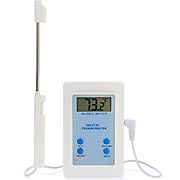
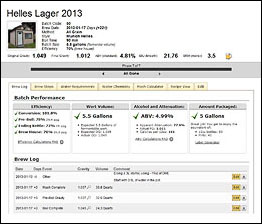
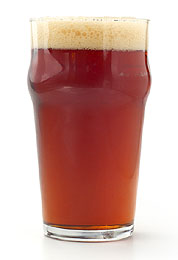 Bitter is the term given to a category of English pale ales, named for their relative bitterness compared to the English mild ale. Though they’re called bitter, they’re no more so than your average American pale ale. Ideally, English bitter ales should be session-able. Imagine drinking them in rounds at the local pub.
Bitter is the term given to a category of English pale ales, named for their relative bitterness compared to the English mild ale. Though they’re called bitter, they’re no more so than your average American pale ale. Ideally, English bitter ales should be session-able. Imagine drinking them in rounds at the local pub.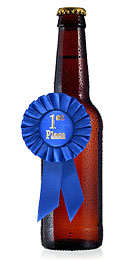 If you’ve caught the homebrewing bug, chances are that you’ve thought about submitting some of your beers in a home brewing competition. The cost is usually minimal — maybe $5-7 per entry — and the payoff can be huge. Many home brewing competitions offer as the grand prize an opportunity to brew your batch on a commercial system. Win a Pro-Am competition, and your beer could be served at the
If you’ve caught the homebrewing bug, chances are that you’ve thought about submitting some of your beers in a home brewing competition. The cost is usually minimal — maybe $5-7 per entry — and the payoff can be huge. Many home brewing competitions offer as the grand prize an opportunity to brew your batch on a commercial system. Win a Pro-Am competition, and your beer could be served at the 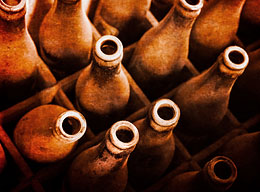 Time and again I hear someone say, “I tried brewing once, but I didn’t stick with it.” Before you know it, excuses pile up like trub in the kettle! Maybe I’m biased, but I feel like just one brew isn’t enough to make final judgement on the hobby. In an attempt to convince some of those one-timers to stick with it, here are some of the most common reasons people quit brewing — and why they should dust off the
Time and again I hear someone say, “I tried brewing once, but I didn’t stick with it.” Before you know it, excuses pile up like trub in the kettle! Maybe I’m biased, but I feel like just one brew isn’t enough to make final judgement on the hobby. In an attempt to convince some of those one-timers to stick with it, here are some of the most common reasons people quit brewing — and why they should dust off the  Love malty beers? Then Scotch ales are for you.
Love malty beers? Then Scotch ales are for you.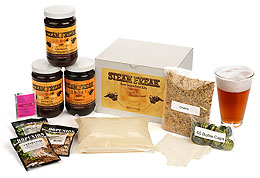

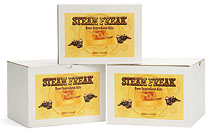
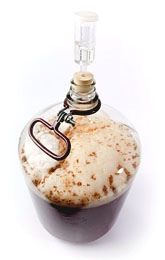 I brewed a decent Scottish ale. Racked it after primary fermentation of about 7 days or so. But just haven’t made time to bottle it. It’s been in the secondary about 5 or 6 weeks. The air lock suggests it’s still fermenting. I pulled out a glass. It’s of course flat, but the flavors are good. If I bottled as normal with priming sugar, will there be enough living yeast to carbonate this late in the process. What should I do to ensure my finished product doesn’t seem like I let it sit too long?
I brewed a decent Scottish ale. Racked it after primary fermentation of about 7 days or so. But just haven’t made time to bottle it. It’s been in the secondary about 5 or 6 weeks. The air lock suggests it’s still fermenting. I pulled out a glass. It’s of course flat, but the flavors are good. If I bottled as normal with priming sugar, will there be enough living yeast to carbonate this late in the process. What should I do to ensure my finished product doesn’t seem like I let it sit too long? As the craft beer movement has taken the nation by storm, craft beer cocktails have made their way into bars and restaurants around the country. But you don’t have to go to the local pub for a good mixed drink. All you need is some home brew on hand and a few special ingredients to impress your friends with your new skill set: craft beer mixology.
As the craft beer movement has taken the nation by storm, craft beer cocktails have made their way into bars and restaurants around the country. But you don’t have to go to the local pub for a good mixed drink. All you need is some home brew on hand and a few special ingredients to impress your friends with your new skill set: craft beer mixology.